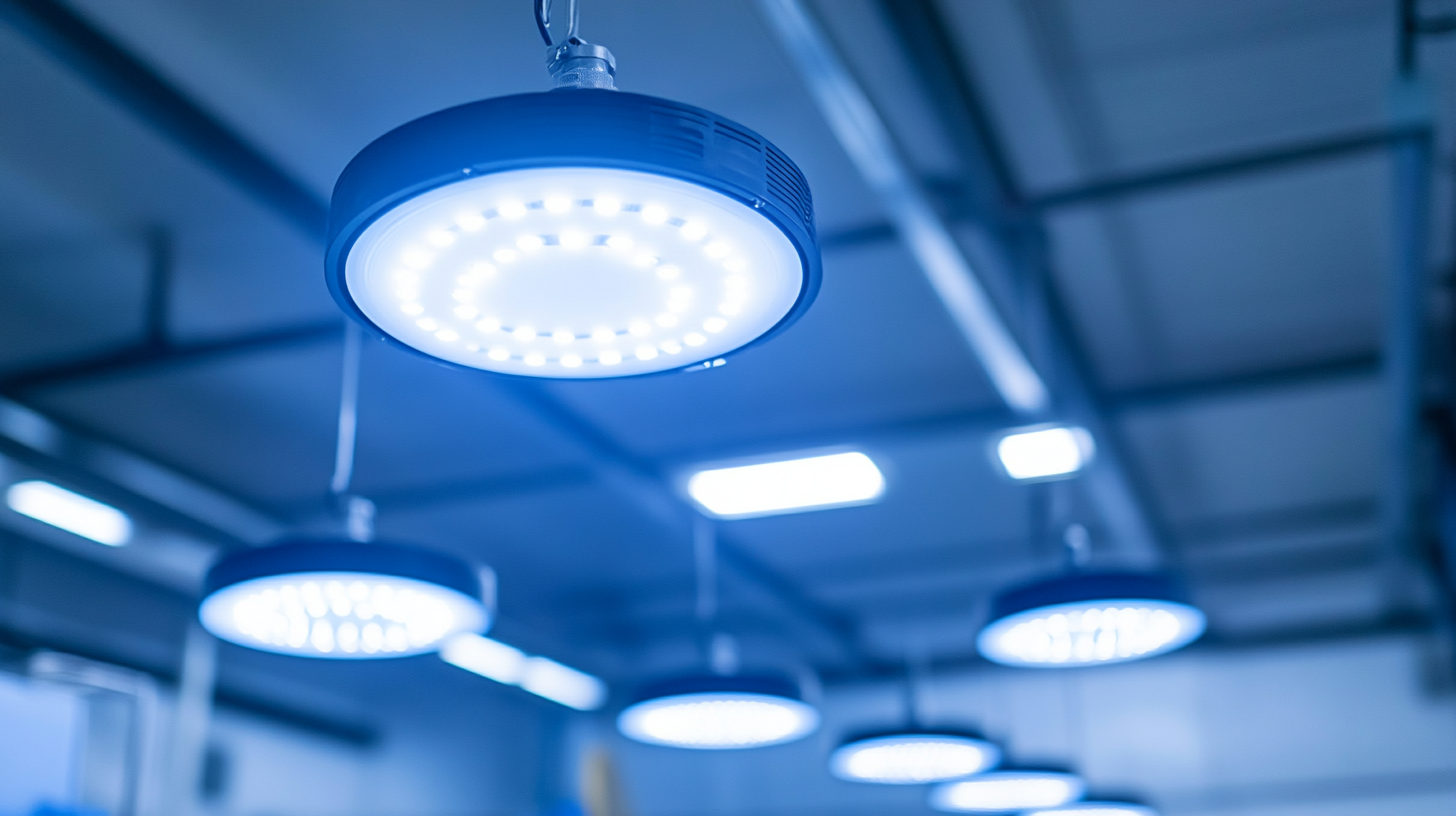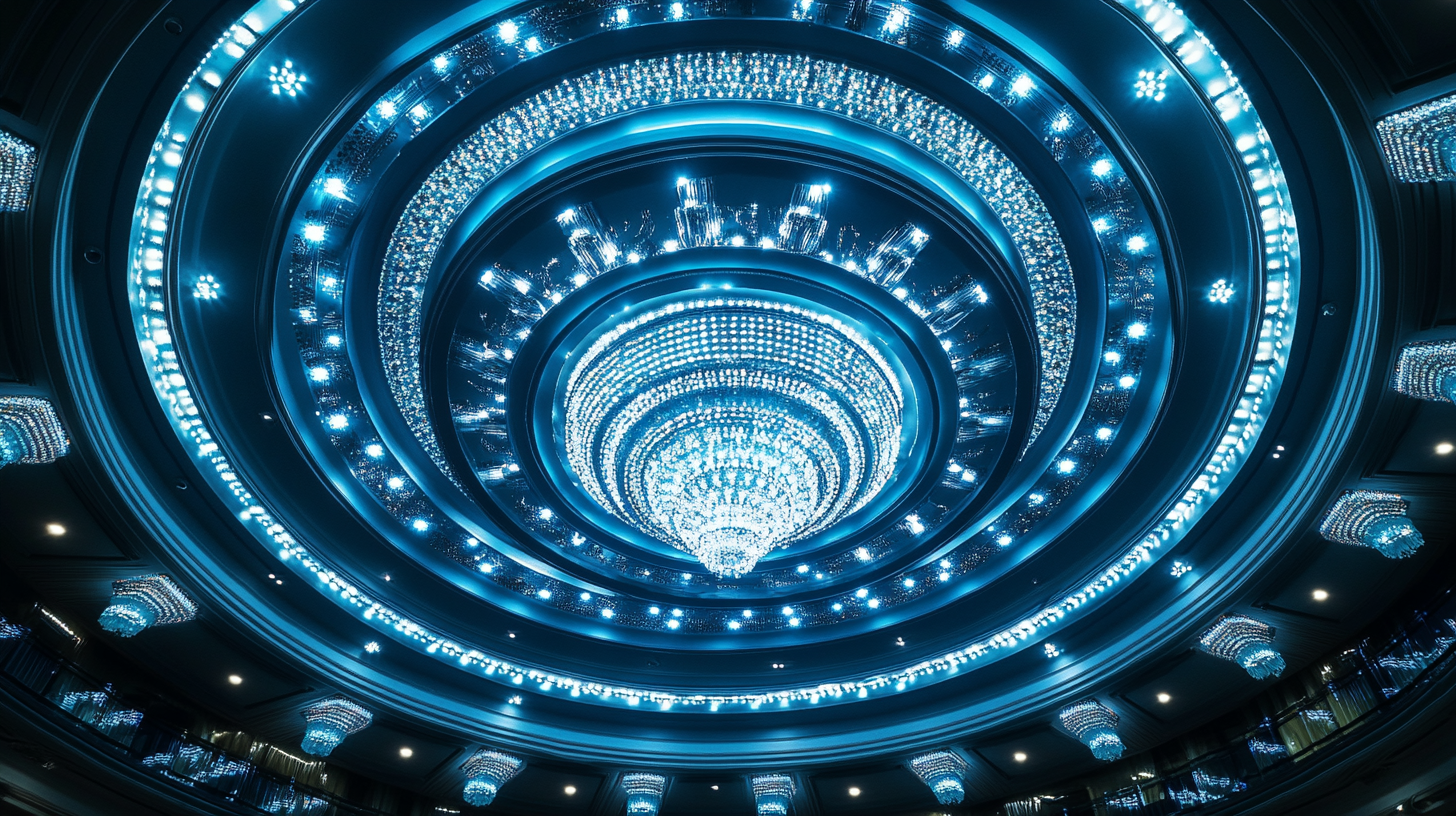Finding the Right Supplier for Ceiling LED Lights Essential Considerations and Steps
The market for Ceiling LED Lights has witnessed significant growth in recent years, driven by increasing energy efficiency awareness and advancements in lighting technology. According to a report by Grand View Research, the global LED lighting market size was valued at over $70 billion in 2020, and is expected to expand at a compound annual growth rate (CAGR) of around 13.2% from 2021 to 2028. This surge emphasizes the importance of selecting the right supplier, as the quality and innovation of LED products can greatly influence overall project success.
When searching for a supplier for Ceiling LED Lights, several essential considerations come into play. Factors such as product quality, certification standards, and customer service can distinguish leading suppliers from the competition. A recent study by the Lighting Research Center highlights that not only the efficiency but also the aesthetic and functional aspects of LED lighting can significantly impact user satisfaction and energy consumption. Thus, understanding these critical aspects is vital for businesses and consumers aiming to make informed decisions in a rapidly evolving marketplace.

Identifying Your Specific Lighting Needs for Ceiling LED Lights
When selecting ceiling LED lights, it’s pivotal to accurately identify your specific lighting needs. Start by assessing the purpose of the lighting in each room. For instance, in living areas, warmer tones (around 2700K to 3000K) create a cozy atmosphere conducive to relaxation, according to the American Lighting Association. In contrast, kitchens or workspaces benefit from cooler, daylight-like illumination (4000K to 5000K) for more productive environments. Consider the area’s size and layout. A room that is larger may require multiple fixtures or dimmable options to ensure even distribution of light. A recent survey by the Institute of Energy and Sustainability found that installing LED lighting can reduce energy consumption by up to 75%, making it not just an aesthetic choice but a functional one. Ensure your chosen bulbs have an adequate lumen output for the space. For example, general ambient lighting typically needs around 150-300 lumens per square meter to be effective. Additionally, pay attention to the style and design of the fixtures. As renters look for solutions to “boob lights,” innovative options like Tulip Shades have emerged, allowing for customization without permanent alterations. This not only enhances the room’s aesthetic but can also facilitate easier transitions between different living spaces. Always verify energy efficiency ratings on the fixtures, as this can lead to long-term savings while supporting sustainable practices—vital considerations for modern consumers.

Evaluating Potential Suppliers: Quality, Reputation, and Experience
When evaluating potential suppliers for ceiling LED lights, it's crucial to focus on three key factors: quality, reputation, and experience. The Global LED Lighting Market is projected to reach $105 billion by 2027, driven largely by the growing demand for energy-efficient lighting solutions. This boom highlights the importance of sourcing products from suppliers who can consistently deliver high-quality offerings that comply with industry standards.
Quality assurance should be at the forefront of your evaluation. According to a report by the Energy Efficiency Institute, LED lights that meet the Energy Star certification are 80% more efficient than traditional incandescent bulbs. Verify that your suppliers provide LED lights that not only meet these certifications but also offer longevity and warranty guarantees. A supplier's commitment to quality can often be seen in their manufacturing processes and adherence to certifications such as ISO 9001.
Reputation in the market is another crucial consideration. Look for suppliers with positive reviews and a solid track record in customer satisfaction, which can often be found in industry publications and trade forums. A 2021 survey by Lighting Magazine noted that 65% of lighting professionals prioritize supplier reputation when making purchasing decisions. This insight emphasizes the weight that a supplier’s established credibility holds in ensuring reliability and service quality.
Experience in the industry cannot be overlooked, as seasoned suppliers are more likely to understand the nuances of the market and evolving technologies. A supplier with more than a decade of experience often has a better grasp of compliance issues and can offer innovative solutions suited to varying project needs. Research indicates that established suppliers are typically better equipped to handle challenges in supply chains, which is particularly vital in today's fast-paced lighting market.

Key Factors in Pricing: Understanding Cost vs. Value in LED Lighting
When it comes to purchasing ceiling LED lights, understanding the intricacies of pricing is crucial. Many buyers often equate the price of a product with its quality, but it's essential to distinguish between cost and value. While a lower-priced option may seem attractive at first glance, it often lacks longevity and efficiency, which ultimately could lead to higher overall costs due to frequent replacements and energy consumption.
Value, on the other hand, encompasses not just the initial purchase price but also the benefits over time. High-quality LED lights may come with a higher upfront cost, yet their energy-saving capabilities, extended lifespan, and reduced maintenance demands translate into significant savings in the long run. Moreover, factors such as warranty and customer support can enhance the perceived value of a product, making it worth the investment. Buyers should also consider the potential for rebates or incentives from local governments or utilities, which can further influence the cost-effective nature of premium products.
In assessing the balance between cost and value, it's advisable to conduct thorough research and comparisons. Look for reputable suppliers who provide transparent information about the specifications, energy ratings, and warranty offerings of their products. Engaging with industry experts or reading customer reviews can also shed light on the true value offered by different options, ensuring a more informed and satisfactory purchasing decision.

Assessing Supplier Support and Warranty Options for Ceiling LED Lights
When selecting a supplier for ceiling LED lights, understanding their support and warranty options is crucial for making an informed decision. Reliable supplier support can significantly impact the success of your lighting project. It’s essential to assess whether the supplier offers comprehensive technical assistance, installation guidance, and post-purchase customer service. A supplier that is responsive and provides clear communication channels can help troubleshoot issues quickly, ensuring that your lighting system operates efficiently.
Warranty options are another critical factor to consider. A robust warranty not only reflects the supplier's confidence in their product quality but also provides peace of mind for your investment. Look for suppliers who offer extended warranties that cover defects and malfunctions over a reasonable period. Understanding the terms of the warranty, such as what it covers, the process for claims, and any potential costs involved can save you from unexpected expenses in the long run.
Additionally, consider the supplier's track record and customer reviews. Feedback from previous clients can provide insights into their experiences with support and warranty claims. A supplier with a strong reputation for customer satisfaction will typically have prompt service and transparent policies, making it easier to address any concerns that arise after the purchase. By prioritizing these considerations, you can choose a supplier who not only meets your technical needs but also stands by their products with reliable support and warranty options.
Navigating Logistics: Delivery Times and Installation Support from Suppliers
When selecting a supplier for ceiling LED lights, navigating logistics can greatly impact your overall experience. One of the most critical factors to consider is delivery times. A supplier that reliably meets deadlines is essential, especially for projects with tight schedules. Delayed shipments can set back installation timelines and increase unforeseen costs. Therefore, it’s vital to inquire about standard delivery windows, as well as their capability to handle rush orders if needed. Understanding the logistics network of your supplier can give you peace of mind, ensuring that the products arrive on time and in excellent condition.
Apart from timely delivery, installation support from suppliers can significantly enhance your purchasing experience. Many reputable suppliers offer comprehensive assistance, from offering user-friendly installation guides to providing on-site training or even full installation services. It's beneficial to discuss the level of installation support they provide before making a commitment. A supplier that stands behind their product can help you troubleshoot potential issues during installation, thereby minimizing disruptions. Being proactive in discussing these logistics aspects can prevent future complications and ensure a smoother installation process, making your transition to LED lighting a success.

